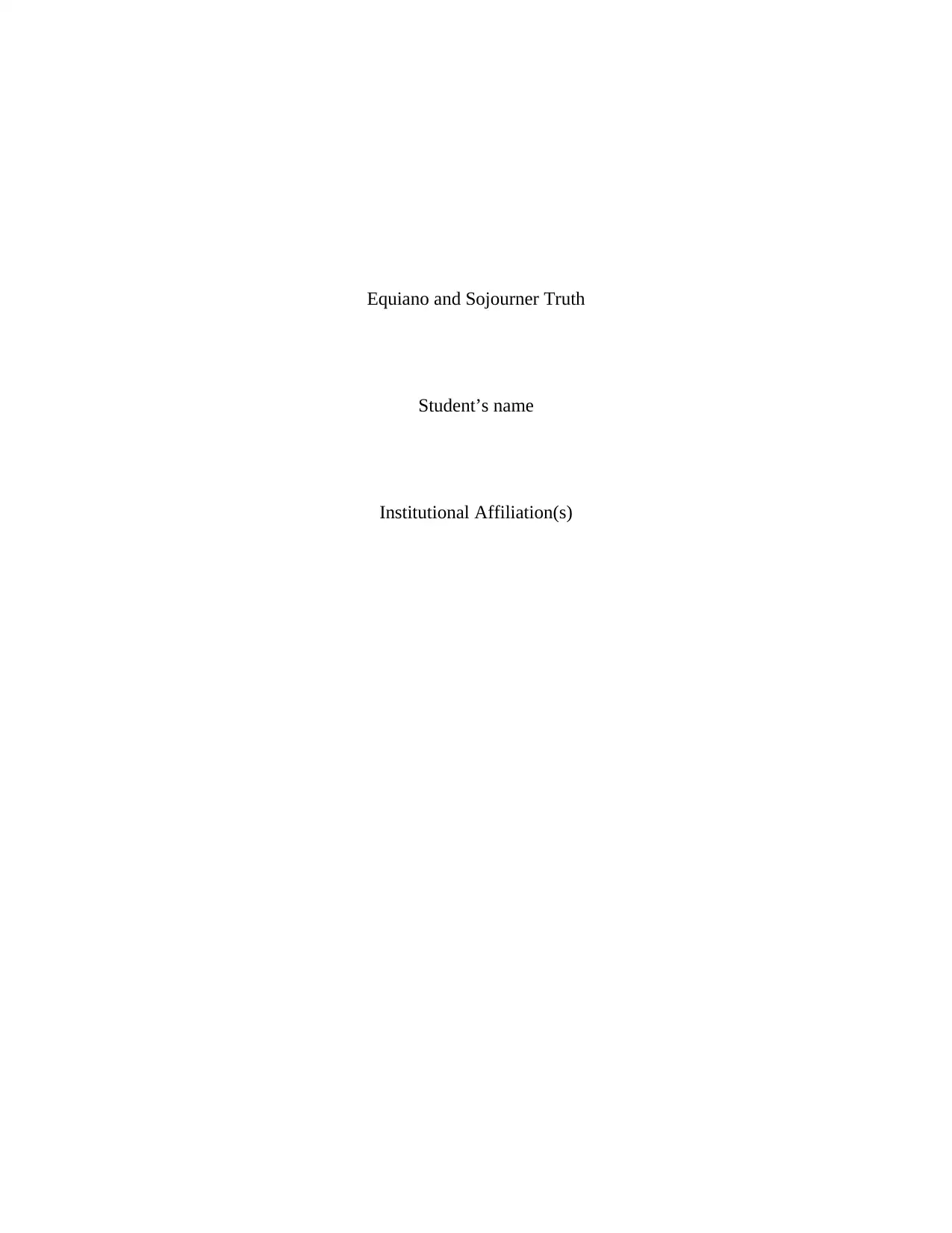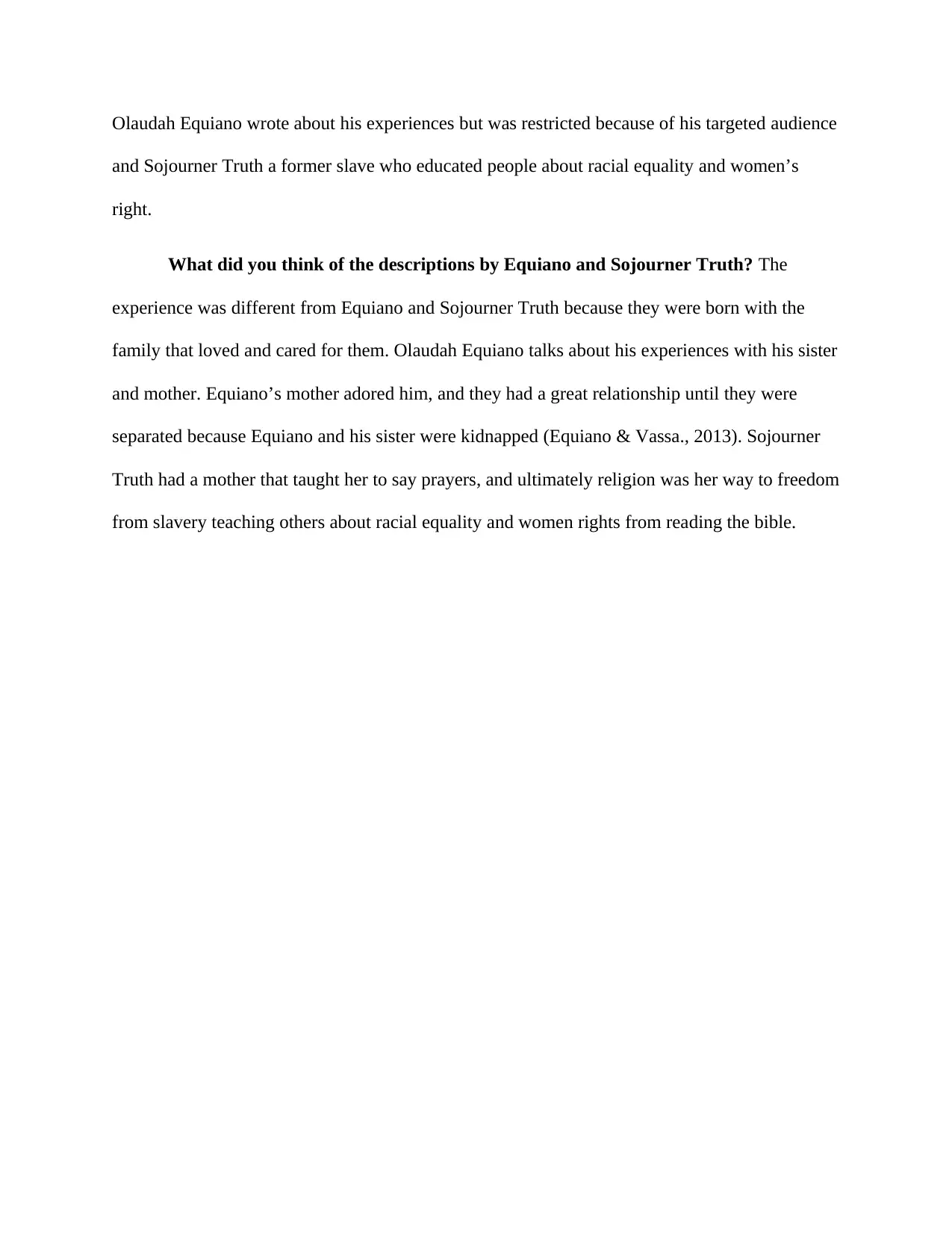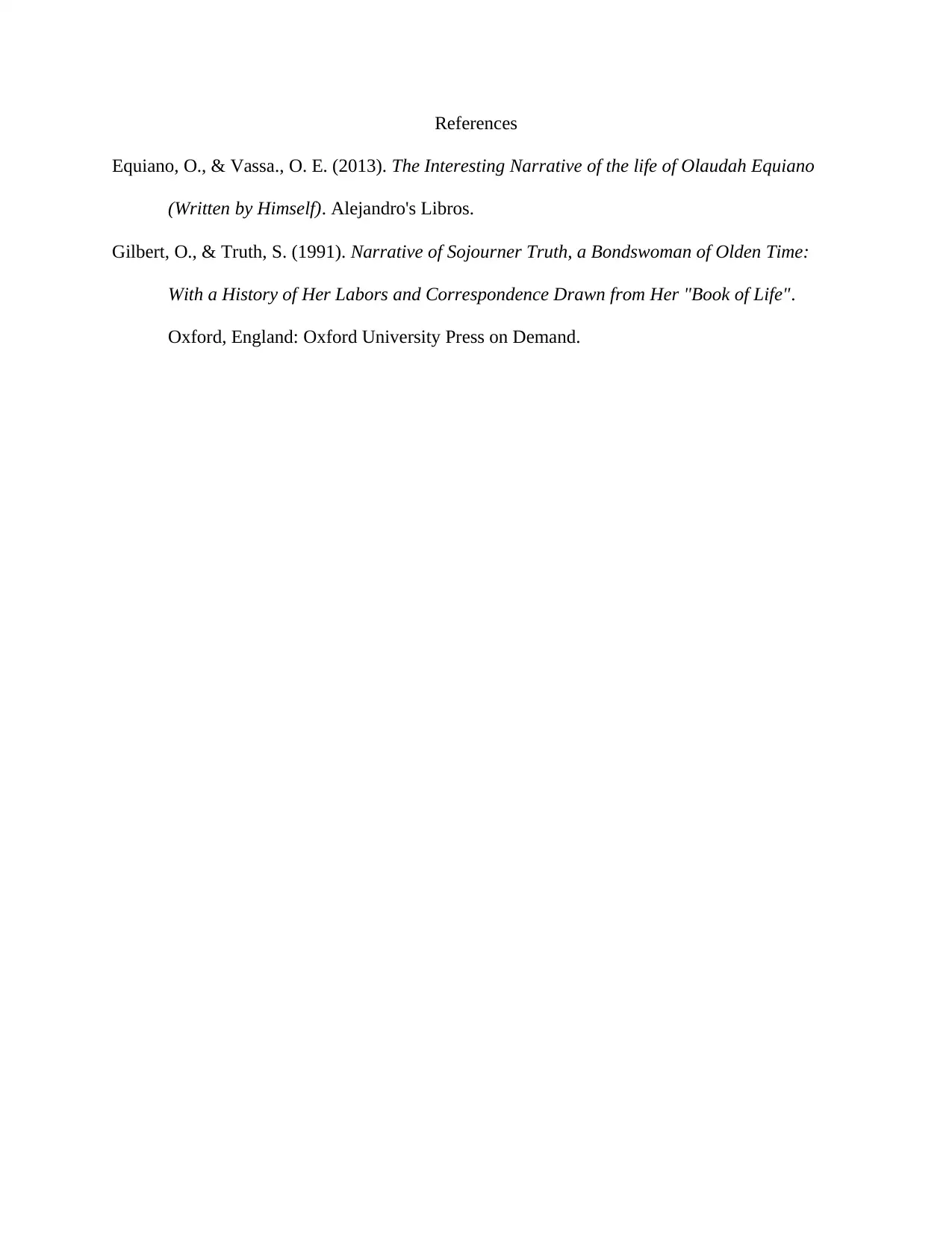Historical Analysis of Slavery: Comparing Equiano and Sojourner Truth
VerifiedAdded on 2023/04/21
|4
|613
|286
Essay
AI Summary
This essay defines slavery through the experiences of Olaudah Equiano and Sojourner Truth, highlighting the dehumanization and lack of bodily autonomy endured by slaves. It discusses the mental disconnection slaves faced, torn between resistance and the deadly consequences of rebellion. The essay explores the difficult circumstances of forced labor, family separation, and the witnessing of violence, further examining the economic and political factors that perpetuated slavery despite resistance. Equiano's narrative focuses on his early life and kidnapping, while Sojourner Truth's story emphasizes the role of religion in her fight for racial equality and women's rights. The essay concludes by reflecting on the distinct experiences and contributions of both figures in raising awareness about the injustices of slavery.
1 out of 4











![[object Object]](/_next/static/media/star-bottom.7253800d.svg)